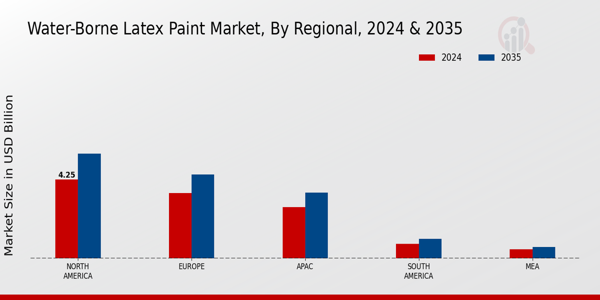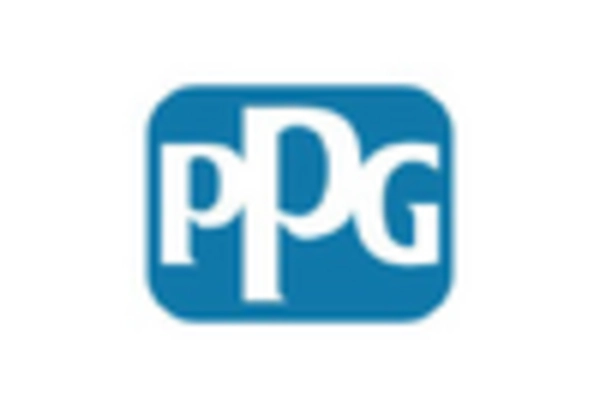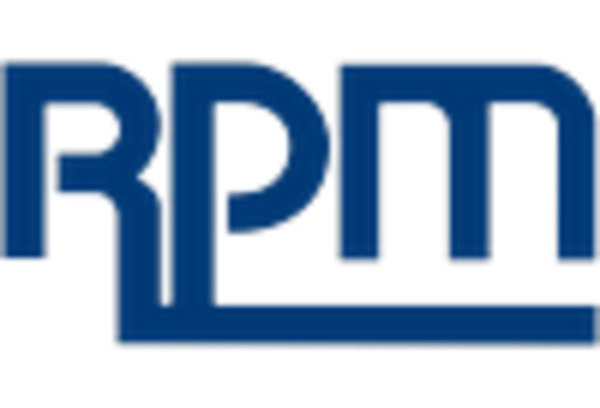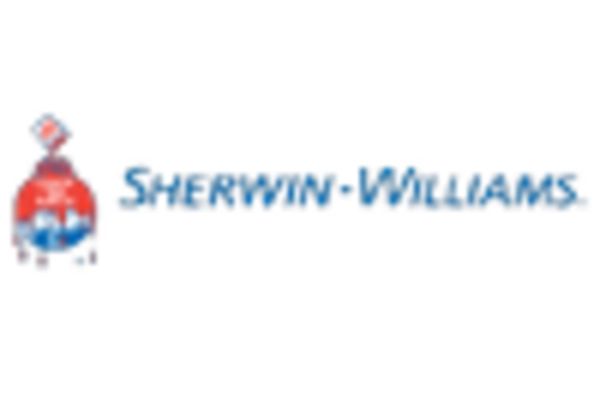Environmental Regulations
The increasing stringency of environmental regulations is a pivotal driver for the Water-Borne Latex Paint Market. Governments worldwide are implementing stricter guidelines to reduce volatile organic compounds (VOCs) in paints, which has led to a surge in demand for water-borne latex paints. These paints typically contain lower levels of VOCs compared to their solvent-based counterparts, making them more compliant with environmental standards. As a result, manufacturers are increasingly focusing on developing eco-friendly formulations to meet regulatory requirements. The market for water-borne latex paints is projected to grow at a compound annual growth rate (CAGR) of approximately 5% over the next few years, driven by these regulatory pressures. This trend not only enhances the market's appeal but also aligns with the broader global movement towards sustainability.
Growth of the DIY Segment
The burgeoning do-it-yourself (DIY) culture is a notable driver for the Water-Borne Latex Paint Market. As more individuals engage in home improvement projects, the demand for user-friendly and versatile paint products has surged. Water-borne latex paints are particularly appealing to DIY enthusiasts due to their ease of use, quick drying times, and minimal odor. Recent surveys indicate that approximately 60% of homeowners are inclined to undertake DIY projects, which has led to a corresponding increase in the sales of water-borne latex paints. This trend is expected to continue, with the DIY segment projected to grow by 10% annually, thereby providing a substantial boost to the overall market.
Health and Safety Awareness
Growing awareness regarding health and safety is a crucial driver for the Water-Borne Latex Paint Market. Consumers are becoming increasingly conscious of the potential health risks associated with traditional solvent-based paints, which often contain harmful chemicals. Water-borne latex paints, on the other hand, are perceived as safer alternatives due to their lower toxicity levels and reduced emissions of harmful substances. This shift in consumer preference is evident in the rising sales of water-borne latex paints, which have seen an increase of approximately 20% in the past year alone. As health-conscious consumers continue to prioritize safer products, the demand for water-borne latex paints is likely to rise, further solidifying their position in the market.
Rising Construction Activities
The resurgence of construction activities across various sectors is significantly propelling the Water-Borne Latex Paint Market. With urbanization and infrastructure development on the rise, there is an escalating demand for high-quality paints that offer durability and aesthetic appeal. Water-borne latex paints are favored in both residential and commercial projects due to their quick drying times and ease of application. According to recent data, the construction sector is expected to witness a growth rate of around 4% annually, which directly correlates with the increasing consumption of water-borne latex paints. This growth is further supported by the trend of using paints that are less harmful to the environment, thereby enhancing the market's potential for expansion.
Innovative Product Developments
Innovation in product formulations is a significant driver for the Water-Borne Latex Paint Market. Manufacturers are investing in research and development to create advanced water-borne latex paints that offer enhanced performance characteristics, such as improved adhesion, washability, and resistance to fading. These innovations not only cater to the evolving needs of consumers but also help in differentiating products in a competitive market. For instance, the introduction of paints with antimicrobial properties has gained traction, particularly in commercial settings where hygiene is paramount. The market is expected to see a surge in innovative products, with projections indicating that such advancements could account for a 15% increase in market share over the next few years.


















Leave a Comment